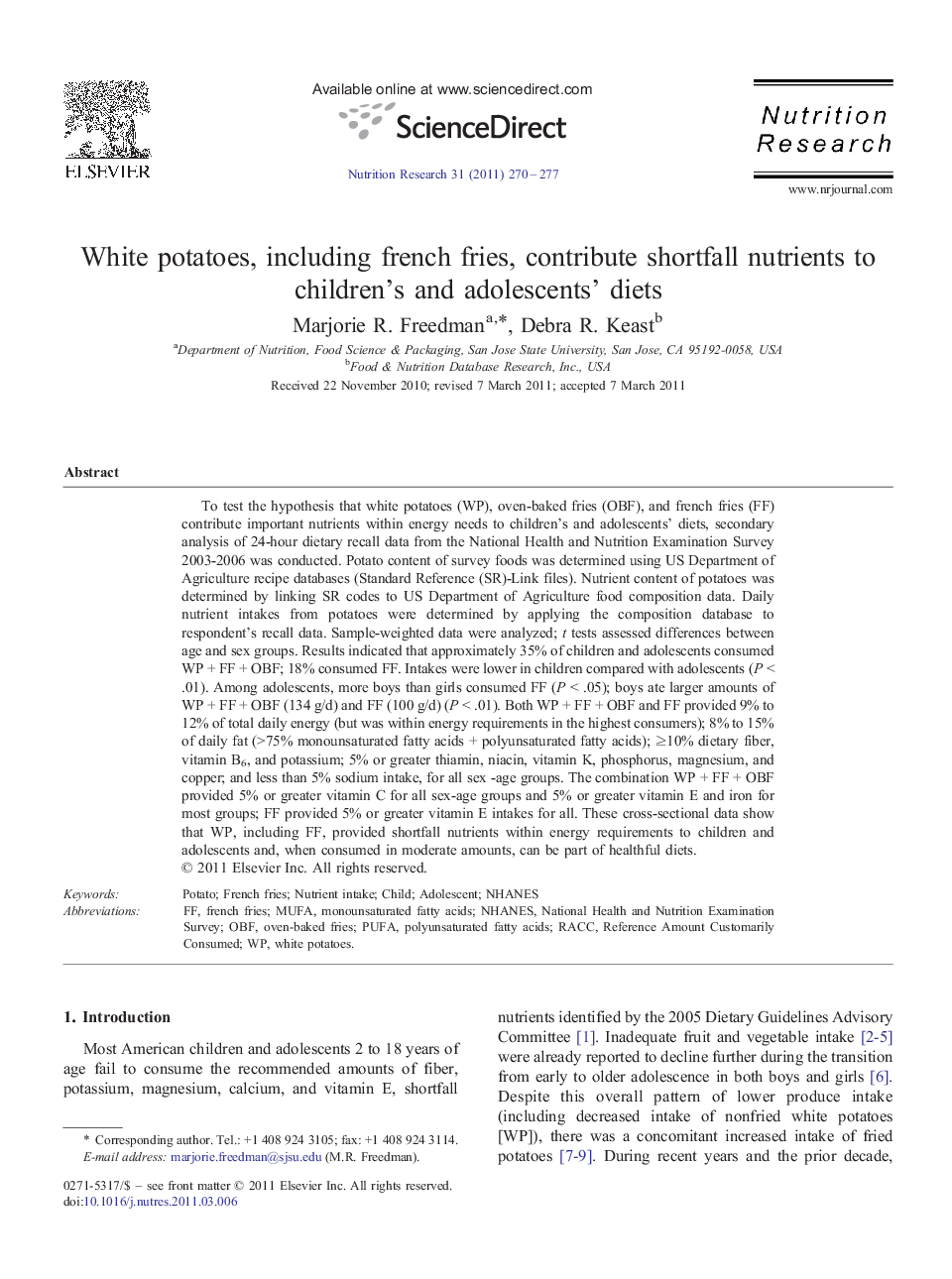| کد مقاله | کد نشریه | سال انتشار | مقاله انگلیسی | نسخه تمام متن |
|---|---|---|---|---|
| 2809330 | 1158035 | 2011 | 8 صفحه PDF | دانلود رایگان |

To test the hypothesis that white potatoes (WP), oven-baked fries (OBF), and french fries (FF) contribute important nutrients within energy needs to children's and adolescents' diets, secondary analysis of 24-hour dietary recall data from the National Health and Nutrition Examination Survey 2003-2006 was conducted. Potato content of survey foods was determined using US Department of Agriculture recipe databases (Standard Reference (SR)-Link files). Nutrient content of potatoes was determined by linking SR codes to US Department of Agriculture food composition data. Daily nutrient intakes from potatoes were determined by applying the composition database to respondent's recall data. Sample-weighted data were analyzed; t tests assessed differences between age and sex groups. Results indicated that approximately 35% of children and adolescents consumed WP + FF + OBF; 18% consumed FF. Intakes were lower in children compared with adolescents (P < .01). Among adolescents, more boys than girls consumed FF (P < .05); boys ate larger amounts of WP + FF + OBF (134 g/d) and FF (100 g/d) (P < .01). Both WP + FF + OBF and FF provided 9% to 12% of total daily energy (but was within energy requirements in the highest consumers); 8% to 15% of daily fat (>75% monounsaturated fatty acids + polyunsaturated fatty acids); ≥10% dietary fiber, vitamin B6, and potassium; 5% or greater thiamin, niacin, vitamin K, phosphorus, magnesium, and copper; and less than 5% sodium intake, for all sex -age groups. The combination WP + FF + OBF provided 5% or greater vitamin C for all sex-age groups and 5% or greater vitamin E and iron for most groups; FF provided 5% or greater vitamin E intakes for all. These cross-sectional data show that WP, including FF, provided shortfall nutrients within energy requirements to children and adolescents and, when consumed in moderate amounts, can be part of healthful diets.
Journal: Nutrition Research - Volume 31, Issue 4, April 2011, Pages 270–277